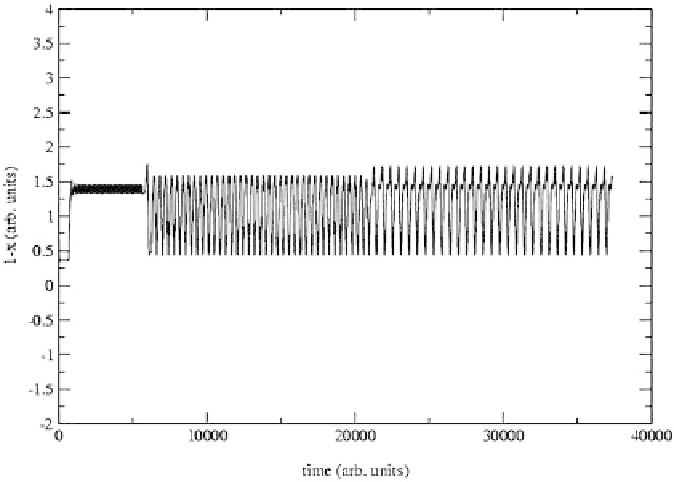Biomedical Engineering Reference
In-Depth Information
Fig. 9.7.
Diverse air sac pressure patterns that can be generated by simple RA
activity forcing brainstem nuclei at different frequencies
only driving is inspiratory). If the activities of these muscles are taken to be
proportional to the activities in the neural nuclei RAm and PAm (called
i
2
and
i
1
), one can write
m
d
2
x
dt
2
+
kx
+
b
dx
dt
=
α
1
i
1
−
α
2
i
2
(9.13)
for
x
,wheretheterm
kx
accounts for elastic recoil of the sac and
bdx/dt
for
the dissipation. The activities
i
1
and
i
2
represent global averages of the ac-
tivity within the nuclei PAm and RAm. Therefore, their dynamics can be de-
scribed in terms of average-rate models [Hoppensteadt and Izhikevich 1997]:
τ
di
1
dt
=
−
i
1
+
S
(
E
1
−
i
2
−
f
(
x
))
,
τ
di
2
dt
=
−
i
2
+
S
(
E
2
−
i
1
+
A
cos(
ωt
))
.
(9.14)
In this model,
S
(
x
)=1
/
(1 +
e
−x
) is a sigmoidal function, typically used to
model saturation in neural rate models. The rationale behind the use of this
function as a driver of the activities in the nuclei is simple: the greater the
amount of excitation that converges on a neuron, the more active it is. How-
ever, since beyond a certain excitation the spiking rate of a neuron does not
increase further, the mean activity of a neuron has to converge to a saturating

